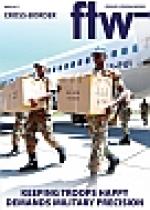The entire logistics value chain between Walvis Bay and neighbouring countries is being re-evaluated in order to reduce the total cost of cross-border shipments using the port as a gateway to the Southern African Development Community (SADC). “We are analysing our logistics processes across all divisions in order to see where we can add value and reduce costs,” says Patrick Kohlstaedt, executive director of Manica Namibia. There is pressure on all parties involved in the supply chain to reduce costs in order to make exports from the region more competitive, he says. The Namibian economy itself is dependent on the country being able to offer efficient, safe and cost-effective transport corridors. According to the World Bank exports of goods and services contributed 39.6% to the Namibian gross domestic product (GDP), and the import of goods and services 64.8%. Some 54% of working Namibians are involved in the services sector, which includes logistics. With its regional footprint Manica Namibia is able to finetune logistics to and from all the major destinations served by Walvis Bay and the corridors, according to Kohlstaedt. Manica Namibia has also teamed up with leading specialist companies to help clients to improve their own supply chain logistics. “There are real savings to be made,” he says. To date they have helped a client to reduce their stock levels through the use of “sophisticated forecasting tools”. Fleet management and route planning software is also helping companies to reduce their transport costs. “Once we have identified the problems we are able to tap into the Manica resources to help companies to reduce their logistics costs while improving the availability of stock,” he says.

